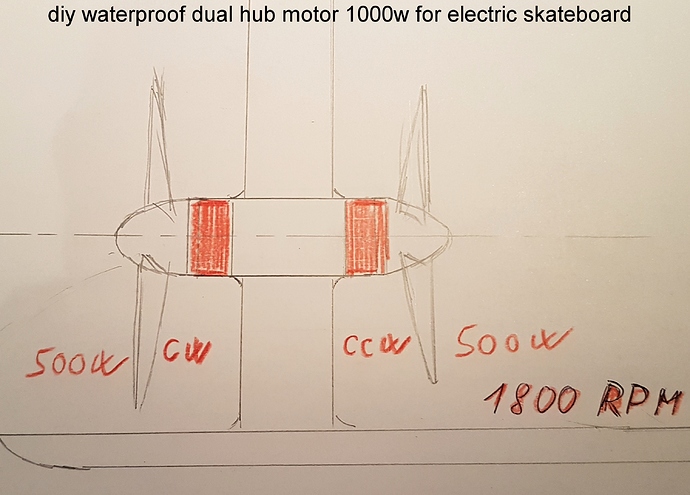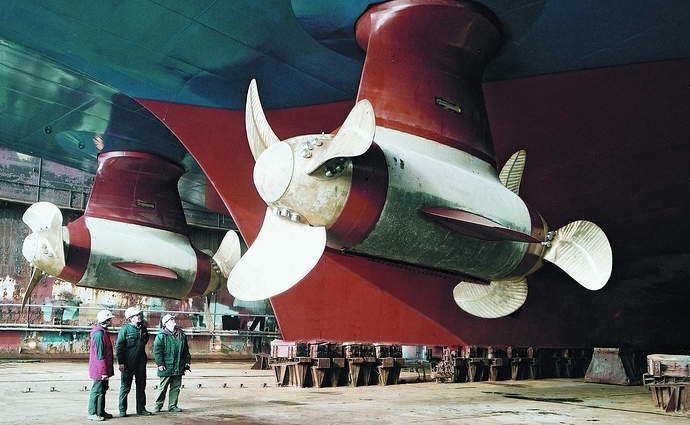I suspect the VESC limited the phase current, because the prop has high pitch, velocity was low, the motor draws full current far away from reaching EMF limit RPM.
I would not go above 12s with underwater electrics in any way. It is risky, you can feel effects of electric. I do not think it affects performance if you have leaks, as the windings are coated well it can only be the plugs.
I like the concept and also thought a lot about in the past. Using two VESC could half the load which is essentially to get much higher power, if needed at all.
You would need new aluminium parts producable on a simple lathe. You need bearings on each side of the rotor. They must have large inner diameter so you can put the cables inside the inner tube. The outer diameter should not be too large, so the outer aluminium ring which holds the rotor can have cutouts to let some water through.
But there are also drawbacks, complexity rises and we still need a duct for safety reasons. It would have at least double length compared to single prop. This length demands thicker walls or structures to keep it stable, leading to more drag. The props mounting rings on the motors rotor add front area and thereby drag.
The load on each propeller would be smaller leading to thinner blades which may be hard to produce. You need two different propeller designs with different blade number and diameter and pitch distribution . And you need to adapt the duct to these effects to gain efficiency compared to a single motor. Sounds like a lot of math is needed to optimize it, or we will have to learn by printing every day.
It 'll be hard but sexy.


